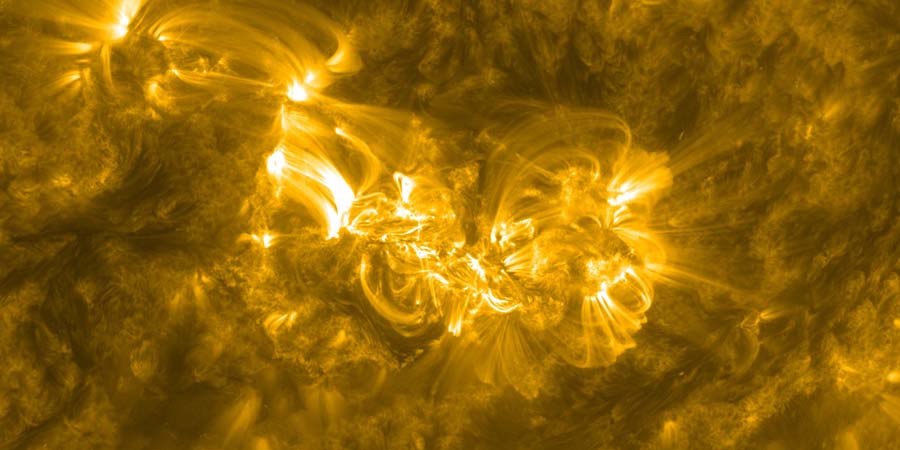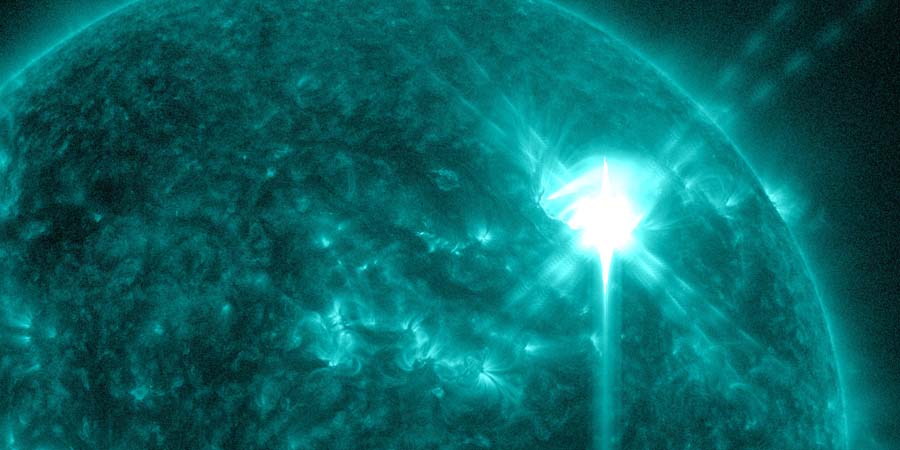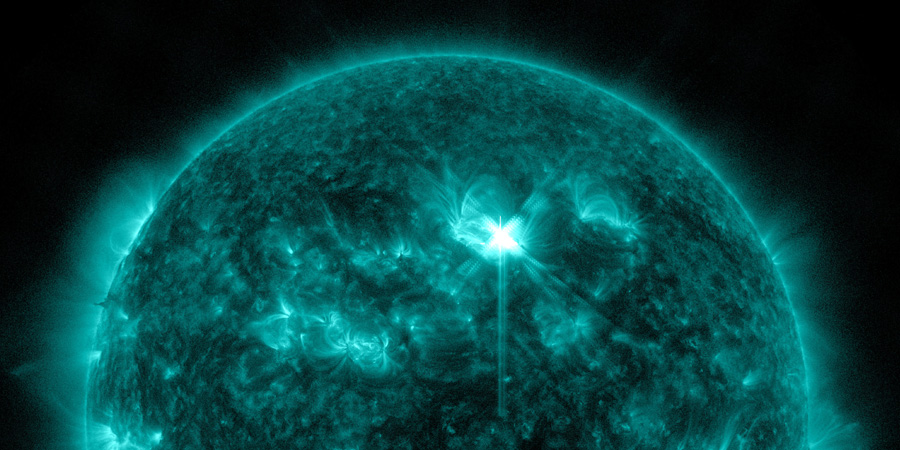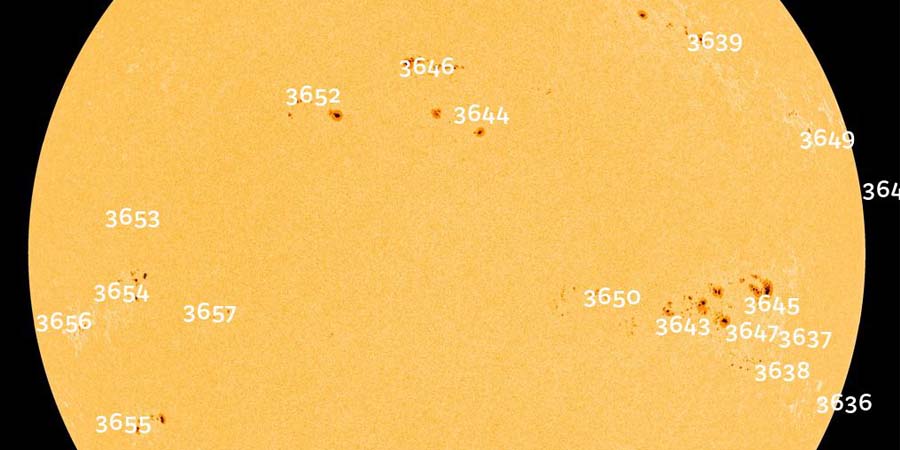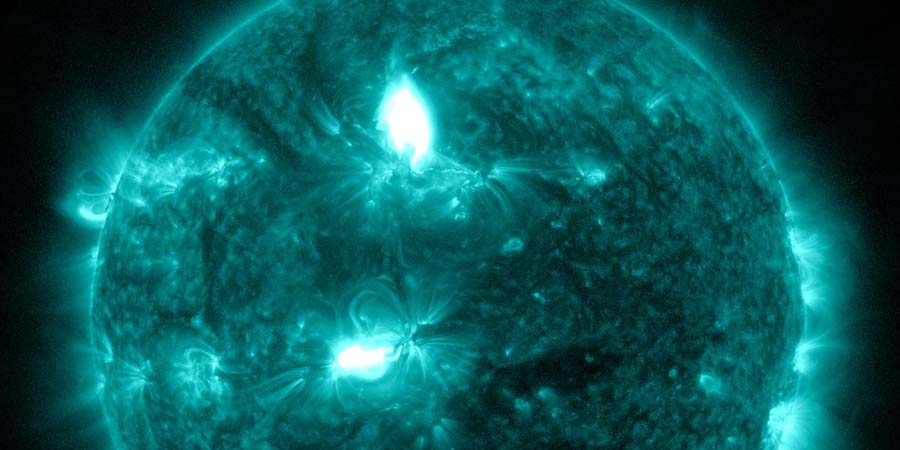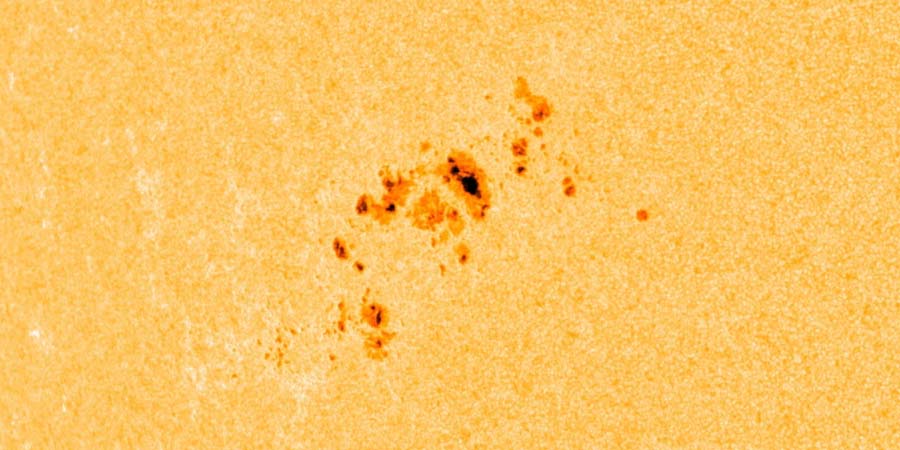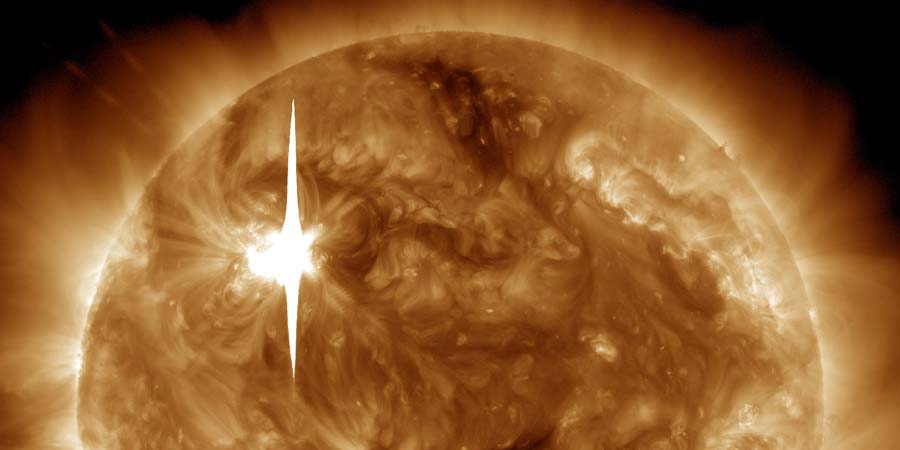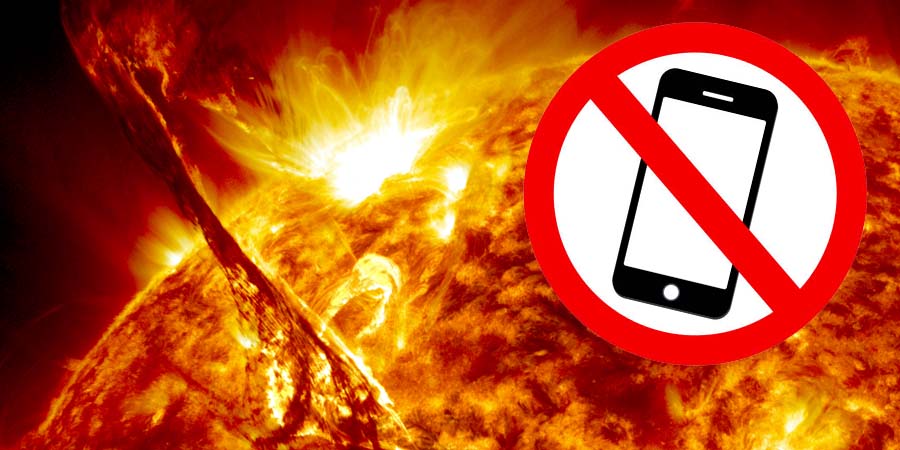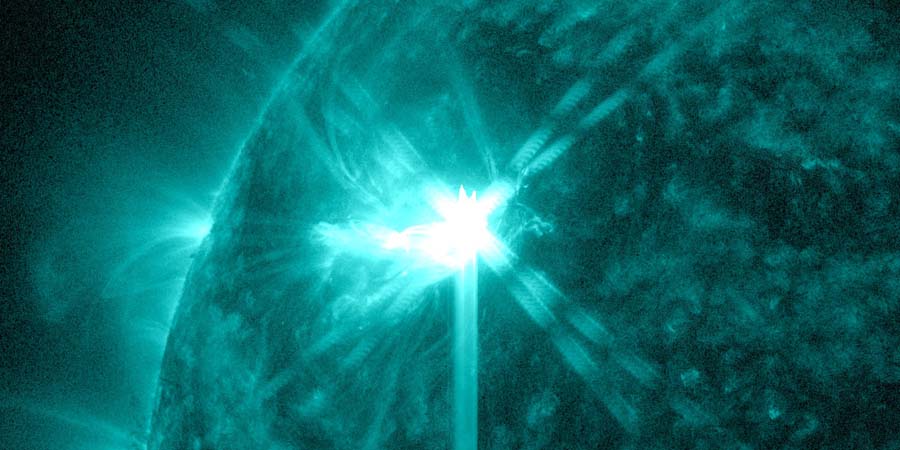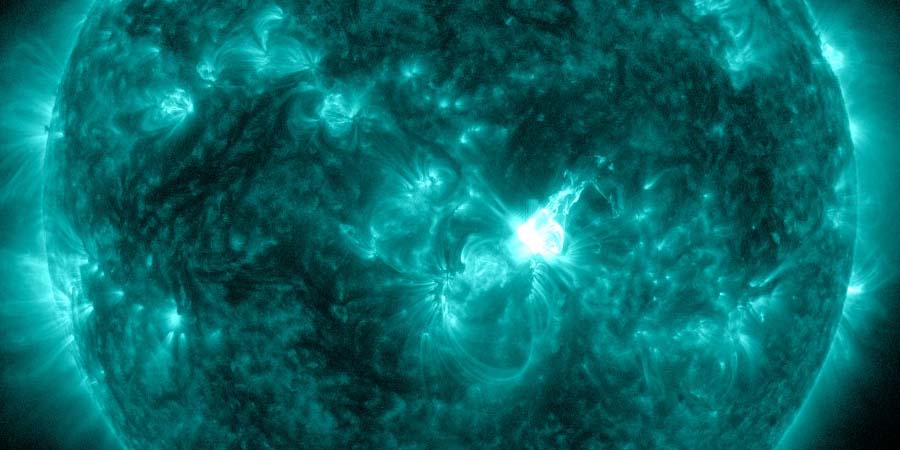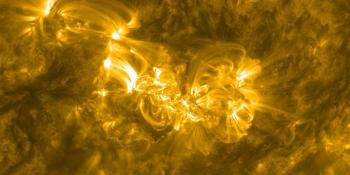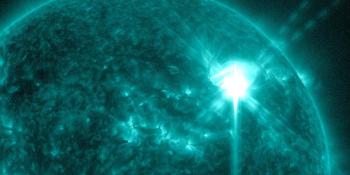Latest news updates Subscribe
Sunspot region 3664, major flares and CMEs!
trečiadienis, 8 gegužės 2024 18:09 UTC
What a day! Sunspot region 3664 and 3668 have merged into a very complex sunspot cluster which has been producing a ton of M-class activity and even two X1 events. The first of these two X-class solar flares was unremarkable but the second X1 solar flare produced a coronal mass ejection with an earth-directed component but more on that later. We are also going to take a look at an M-class event which also produced a coronal mass ejection. A lot to go over today!
X4.5 solar flare
pirmadienis, 6 gegužės 2024 18:32 UTC
Sunspot region 3663 celebrates the start of a new week with a massive X4.5 (R3-strong) solar flare. This is the third strongest solar flare of solar cycle 25 and the strongest solar flare produced by this sunspot region thus far. Sounds great right? When will I be able to see aurora I hear you ask...
Sunspot region 3663, X1 solar flare
šeštadienis, 4 gegužės 2024 07:24 UTC
Sunspot region 3663 has developed into a complex sunspot region over the past few days with a Beta-Gamma-Delta magnetic layout. This complex magnetic layout already produced countless of M-class solar flares and one X1.6 solar flare which is going to be the focus of this article.
Lot's of sunspots! Big chance for major flare activity?
pirmadienis, 22 balandžio 2024 21:58 UTC
Our Sun is peppered with numbered sunspot regions at the moment... 18 to be precise! This adds up to a sunspot number of 283 which is very high.
X1.1 solar flare with earth-directed CME
šeštadienis, 23 kovo 2024 13:36 UTC
A complex eruption took place today which peaked at 01:33 UTC. The associated solar flare reached a peak of X1.1 (R3-strong) and came from sunspot region 3614. An unremarkable sunspot region north of sunspot region 3615. We say that the eruption is complicated because sunspot region 3615 flared at the same time but everything points to the solar flare and resulting eruption from sunspot region 3614 being stronger.
Sunspot region 3615, G1 watch
trečiadienis, 20 kovo 2024 14:57 UTC
March has been a relatively quiet month thus far. We did had a moderate G2 geomagnetic storm back on the 3rd of March but other than a couple of unremarkable M-class solar flares not much has happened considering we are probably nearing the peak of Solar Cycle 24. But... we do have two topics to cover today. Sunspot region 3615 is an interesting sunspot region currently on the earth-facing disk and a minor G1 geomagnetic storm watch is in effect for today and tomorrow.
X6.3 solar flare
ketvirtadienis, 22 vasario 2024 22:55 UTC
Sunspot region 3590 does it again! It's third X-class soalr flare and the strongest solar flare of the currently Solar Cycle thus far peaking at a respectable value of X6.3 (R3-strong).
Did space weather really knock out cell phone service in North America?
ketvirtadienis, 22 vasario 2024 21:53 UTC
It's a hot topic today... North America woke up this morning with nationwide cell phone outage for AT&T. Is this caused by the two X-class solar flares from sunspot region 3590? A lot of people seem to think that is the case but this is completely false. Christian Harris from Space Weather Trackers made a great post explaining why space weather is not to blame for this outage. Correlation is not causation. Read his post below!
Two X-class solar flares only 7 hours apart
ketvirtadienis, 22 vasario 2024 08:33 UTC
Sunspot region 3590 which is located at a fairly high latitude produced two impulsive X-class events. The first solar flare peaked yesterday at 23:07 UTC with a maximum X-ray flux of X1.9 and the second solar flare peaked today at 06:32 with a maximum observed X-ray flux of X1.7. Both events caused a brief strong R3 radio blackout at the day-side of our planet.
M9 solar flare with earth-directed CME
sekmadienis, 11 vasario 2024 17:24 UTC
Finally a sign of life from sunspot region 3576! It produced an M9.0 solar flare (R2-moderate) which peaked yesterday at 23:07 UTC. The solar flare was fairly impulsive but did produce a nice eruption with a mostly northward trajectory.
Paskutinės naujienos
Naujausi forumo pranešimai
Paremkite SpaceWeatherLive.com!
Daug žmonių lankosi SpaceWeatherLive norėdami sekti Saulės aktyvumą arba stebėti ar yra matoma pašvaistė, tačiau dėl didesnio vartotojų srauto didėja serverio išlaikymo kaštai. Jei jums patinka SpaceWeatherLive, apsvarstykite galimybę paaukoti, kad galėtume išlaikyti šią interneto svetainę!

Kosminių orų faktai
| Paskutinis X žybsnis | 2024/05/08 | X1.0 |
| Paskutinis M žybsnis | 2024/05/09 | M2.0 |
| Paskutinė geomagnetinė audra | 2024/05/06 | Kp5 (G1) |
| Dienos be dėmių | |
|---|---|
| Paskutinė diena be dėmių | 2022/06/08 |
| Mėnesio vidutinis Saulės dėmių skaičius | |
|---|---|
| balandžio 2024 | 136.5 +31.6 |
| Paskutinės 30 dienos | 163.9 +73.1 |
